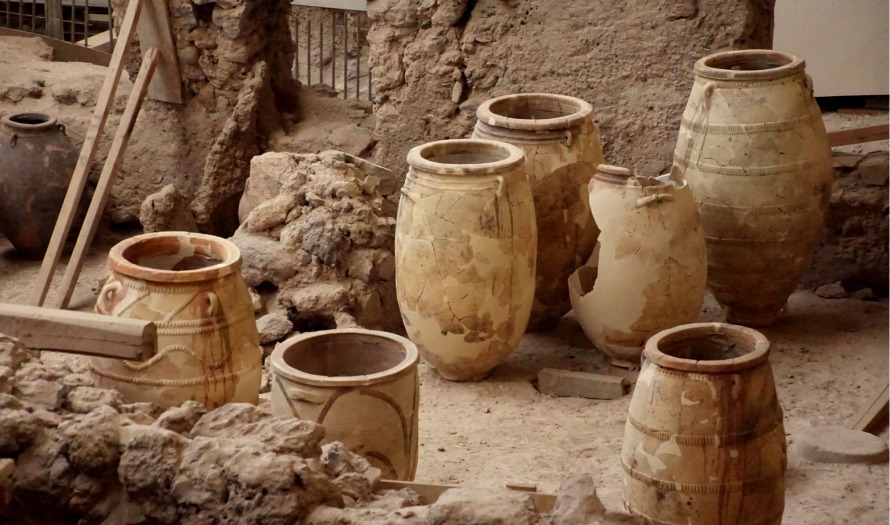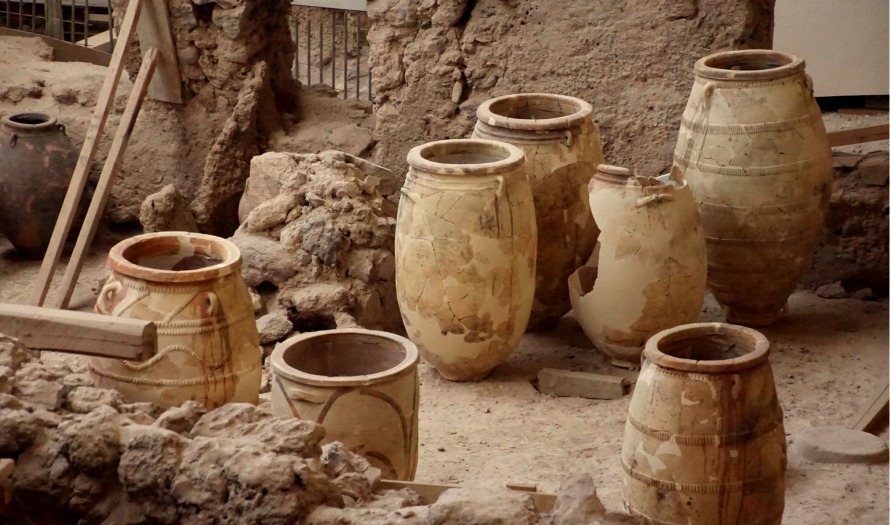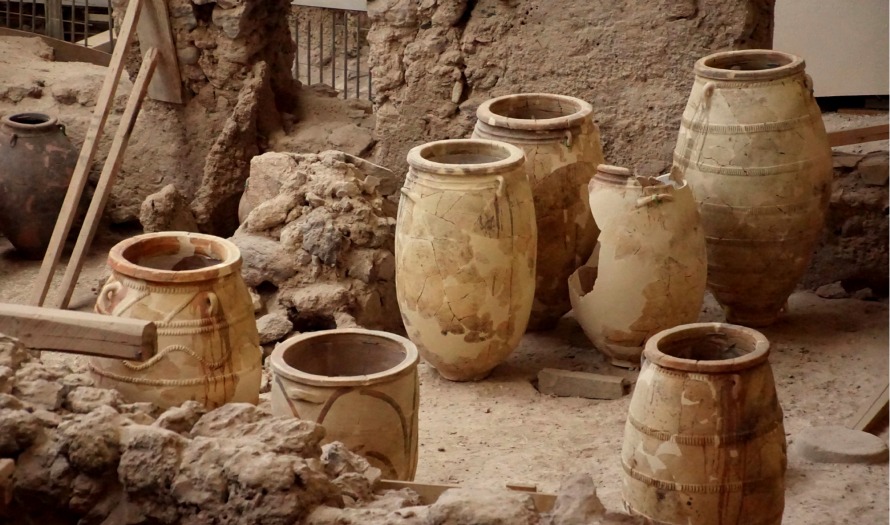Finikia
It is one of the most beautiful villages on the island, and very close to Oia. It is located in the NW side of Santorini with a view over Baxedes, the beach, Ios and other Aegean islands.
Finikia is surrounded by slopes full of vineyards and stone threshing fields. It was fortunate enough not to sustain severe damages during the 1956 earthquake, and stands out for its architecture. According to poet and writer Kadio Kolimva, the buildings here have “…a different kind of wise analogy, because they don’t have to be balanced on the rocks, like the ones built on the Caldera. The houses of Oia talk to the sea, the houses of Finikia talk to the earth. The excellent structure of facades and their harmonious matching of individual elements, stairs, courtyards, ovens, chimneys, give an answer to the question of analogy and measure…”.
People of the plain such as winegrowers, farmers and ploughmen, used to live in Finikia. It was full of kanaves (wineries) -it is thought that on its heyday it had about 150-200 of them. As Kadio Kolimva writes the inhabitants of Finikia were “…those who carved and ploughed the fluffy soil, those who thrashed the barley, those who hunching coiled and harvested the vines. The “artists”, because in such land, art is needed to produce its best and most valuable product, the wine. And when the boats of Panomeritika set sail for the seas of the North, their livelihood was carried in the holds to the end of the world… And from within their plain had they pushed back from their sweaty forehead their cap to farewelling their livelihood but also welcoming the new coming in”.
Attractions
A walk around Finikia is a unique experience (you should come early in the morning, though, or late in the evening, because during the summer it is realy hot). The houses are painted in various colors. Prickly pears are hidden in the narrow streets and there are fences built from black andesite. The staircases leading to the upper floors and the roofs, where they used to sun-dry figs and grapes, are masterpieces. And when the old courtyard gates open up, you can take a peek at the gardens and yards with the old wineries. At the centre of the village once stood a bakery and a grocery store. One of the best locations in Finikia is the yard of the Aghia Matrona church. From there you can gaze at the lower part of the beautiful village, the sea and the area of Baxedes, or the so-called “Potamoi” (paths that lead the water to the valley in the winter, even today).
Aghia Matrona was built in 1859 by F. Platis, a ship-owner from Oia. It is celebrated on the 20th of October with a festival and a wine-tasting contest.
In Finikia there are small hotels and a restaurant.

Σήμερα
Το Καστέλι ξεχωρίζει στην κορυφή του οικισμού του Ακρωτηρίου και περιβάλλεται από ομάδες παλιών σπιτιών και νεόκτιστων. Τα κτίσματα στο Καστέλι (όπως και σε άλλα του νησιού) με τις ανταλλαγές δόθηκαν σε ιδιώτες. Ετσι, από την άνοιξη του 2012 ο χώρος μετατράπηκε σε σε εργαστήριο και έκθεση σχετικά με την τσαμπούνα (www.laponta.gr). Στον οικισμό υπάρχουν επίσης οι εκκλησίες της Αγίας Τριάδας, της Υπαπαντής, και της Αγίας Θεοδοσίας, προστάτιδας των Καστελιών.
Ο φάρος του Ακρωτηρίου
Από ασφαλτωμένο δρόμο 3 χλμ. που οδηγεί και στην Κόκκινη παραλία (υπάρχει σήμανση λίγο πριν μπείτε στον οικισμό) θα πάτε στο ακρωτήριο που ορίζει το δυτικότερο άκρο του νησιού, όπου δεσπόζει ο φάρος. Την ώρα του ηλιοβασιλέματος θα απολαύσετε ένα θέαμα μοναδικό.
Ο φάρος του Ακρωτηρίου είναι ένας από τους ωραιότερους των Κυκλάδων. Κατασκευάστηκε το 1892 από τη Γαλλική Εταιρεία Φάρων. Το ύψος του πύργου του είναι 10 μέτρα. Ανακαινίστηκε το 1925, διέκοψε τη λειτουργία του στον Β΄Παγκόσμιο πόλεμο και άρχισε να λειτουργεί πάλι το 1945. Ηλεκτροδοτήθηκε το 1983 και έγινε αυτόματος το 1988. Νότια του φάρου υπάρχει αγκυροβόλιο προστατευμένο από τους βόρειους ανέμους.

info
- About 2,500 people used to live in Finikia before the 1956 earthquake. Today, the village has few dwellers.
- Some years ago old houses and Canaves were restored, so the village came back to life.
